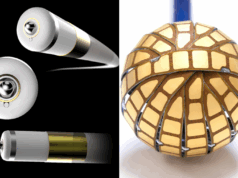
Increasing the amount or intensity of physical activity can cut the chances of older women developing atrial fibrillation, according to new research in the Journal of the American Heart Association (JAHA).
Researchers found that post-menopausal women, enrolled in the Women’s Health Initiative, who were the most physically active had a 10% lower risk of developing atrial fibrillation, compared to women with low levels of physical activity, even if they were obese. Obesity is an important risk factor for atrial fibrillation.
“We found the more physically active the women were, the less likely it was that they would develop atrial fibrillation,” says Marco V Perez, lead author of the study and independent instructor in cardiovascular medicine and director of the Inherited Arrhythmia Clinic at the Stanford University School of Medicine, Stanford, USA. “Also, the more obese the women were, the more they benefited from having greater degrees of physical activity.”
At the start of the study, more than 81,000 post-menopausal women ages 50-79 were asked how often they walked outside for more than 10 minutes daily or how often they engaged in physical activity hard enough to sweat.
After 11 years, the researchers found:
- The most physically active women (those who expended more than nine MET hours per week) had a 10% lower risk of developing atrial fibrillation compared to those who did not walk outside for 10 minutes at least once each week. (MET is a measurement of how much energy is used during physical activity. Nine MET hours per week would be the approximate equivalent of walking briskly for 30 minutes six days a week, or bicycling at a leisurely pace for an hour twice a week.)
- Moderately physically active women (those with less than three MET hours per week) had at least a 6% lower risk of developing atrial fibrillation. Walking briskly for 30 minutes twice a week would provide this benefit.
- Women who engaged in strenuous physical activity for more than 15 MET hours per week also had a 9% lower risk of developing atrial fibrillation. This was the equivalent of running two hours a week.
Earlier research suggested that strenuous exercise might increase the risk for atrial fibrillation, but “there should not be concerns about these degrees of exercise and atrial fibrillation in older women,” Perez says.
Co-authors of the study are: Farnaz Azarbal, Marcia L Stefanick, Elena Salmoirago-Blotcher, JoAnn E Manson, Christine M Albert, Michael J LaMonte, Joseph C Larson, Wenjun Li, Lisa W Martin, Rami Nassir, Lorena Garcia, Themistocles L Assimes, Katie M Tharp, and Mark A Hlatky.
The National Heart, Lung, and Blood Institute, the National Institutes of Health, the US Department of Health and Human Services and the American Heart Association funded the study.









